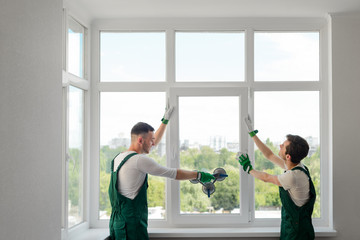 Painting the outside of your house can be a big job. It requires a lot of skill and experience to get it right, particularly when dealing with textured surfaces. handyman will start by examining the walls to see if any cracks need repair or crumbling masonry. Also, assess obstacles like doors, windows, and hedges that could slow the project down or require safety scaffolding.
Painting the outside of your house can be a big job. It requires a lot of skill and experience to get it right, particularly when dealing with textured surfaces. handyman will start by examining the walls to see if any cracks need repair or crumbling masonry. Also, assess obstacles like doors, windows, and hedges that could slow the project down or require safety scaffolding.
Choosing the right colors is one of the most important steps in exterior painting, and it can be a daunting task. Unlike interior paint, which can be changed when you want to redecorate, your exterior color will have a much greater impact on the overall look of your home, and you will likely be stuck with it for years to come. To help you avoid making a mistake that you may regret down the line, we spoke to designers for some tips and tricks on how to choose the right color for your home.
The first thing to consider when choosing a color is your home’s architectural style. Certain styles have more traditional color palettes, while others are more contemporary and allow for bolder hues. It is also important to tour your neighborhood to get an idea of the colors that are used in nearby homes. This will give you a good idea of what works in your area and what is out of style.
If you decide to go with a dark shade, be sure to test it on your exterior before committing. Dark shades can look very different on different types of wood and may turn gray or black in sunlight. Additionally, darker colors can be very drab and uninviting, so it is important to select a shade that will complement your home and not detract from its beauty.
Neutrals are a safe bet when it comes to exterior painting, as they will appeal to most potential buyers. A neutral color will also provide a blank canvas that allows for future customization by the new owner, which is important when it comes to curb appeal. Having a neutral base coat also makes the task of putting your home on the market easier.
Keep in mind that a color will appear lighter when it is wet than when dry. This is why it is important to sample swatches of your chosen shade in the morning, mid-day and at dusk. In addition, you should also sample the color on your home’s brick or stone to ensure that it will coordinate well. By taking these steps, you can be confident that the final result will elevate your curb appeal.
Preparation
Many times, especially in repainting a house, the prep work takes more time than the actual painting. Yet without proper preparation, a paint job is likely to fail in the short-term. This is because paint that is applied to a worn-down surface will be likely to flake or peel.
The bulk of the prep work for an exterior paint project is scraping and sanding. While this can be a messy and tiring task, it’s important to do this before moving on to the painting. Otherwise, painting over old flaking and peeling paint will only lead to a new coat of paint that will flakes and peel in the future.
Once all the loose and flaking paint has been removed, the surface should be sanded to make it smooth. This will help ensure that the new paint adheres to the underlying surface, which in turn will ensure that the new paint will last longer. If you are painting over a previously painted surface, this will also remove any stains or discoloration.
Another essential step is to apply a quality wood filler or weatherboard caulk to any cracks or gaps. This will help to prevent moisture from seeping into the walls and causing damage. For wood surfaces, a quality exterior timber filler such as Selleys No More Gaps Weatherboard or a ready mixed filler like Selleys Spakfilla Heavy Duty should be used.
Next, the surface should be washed down with a good detergent to remove any dirt or debris that has collected on the surface. Then, a water-resistant primer should be applied to the entire surface. This will help the new paint to hold up against moisture and other environmental factors. There are several types of primers available, including oil-based and latex, as well as masonry-specific and shellac primers.
Finally, a test swatch of the finished color should be applied to the surface to ensure that it matches the other colors already on the home. Nothing is more frustrating than working on a large surface and realizing that the shade you chose is too dark or too light.
Painting Techniques
Painting the exterior of your home is an excellent way to boost curb appeal and protect it from moisture damage. However, it’s important to use the right techniques to get a long-lasting, professional finish. Using the right paint and the right surface preparation will help you achieve a beautiful, high-quality finish that will stand up to weather and aging.
Start by sanding or scraping any surfaces that need it. Then wash the surfaces with a pressure washer to remove dirt, chalky residue and debris. After the surface is clean, apply a primer that’s designed for exteriors. This will help the new paint adhere to the surface and cover stains that can’t be removed during cleaning or prep.
After priming, paint the surface with your choice of flat or eggshell exterior paint. It’s best to paint from top to bottom, which will help control streaks and work with gravity instead of against it. Remember to reapply the paint as needed, depending on the weather and time of year.
For your next coat, use a roller or brush for smooth coverage and minimal streaking. If you have a power sprayer, it can be a useful tool for minimizing smearing and getting to hard-to-reach places. Always wear a respirator when using a sprayer, and follow the manufacturer’s instructions for safety and best results.
If you are painting over a dark color, apply a second coat after the first one is dry. For the final coat, it’s best to use a latex paint that is formulated for outdoor use. Latex paint is easier to apply and clean up than other types of exterior paints, and it’s flexible enough to withstand fluctuations in temperature.
It’s worth spending a little more on higher quality paints. You’ll save money in the long run because you’ll need to repaint fewer times over the years, and the colors will last longer. Also, be sure to buy a rust-resistant and mildew-resistant paint that’s designed specifically for exteriors. The more durable the paint, the better it will withstand harsh weather conditions and UV light.
Choosing a Painter
When it comes to hiring a professional to paint your home, you want the best results. That’s why it is important to do your research and compare quotes before making a decision. You should also consider other important factors like experience, customer satisfaction, and warranty.
One of the most important aspects of selecting a painting contractor is finding one who is licensed and insured. This protects you from any damage or accidents that may occur on your property while the work is underway. You should ask each pro for a copy of their license and insurance certificate before starting any project.
The best contractors will take the time to inspect your home before providing a quote. They will note any existing damage and evaluate the size of the job. They will also recommend any necessary prep work and how long the project will take to complete. During this inspection, they will also determine the best time to start work based on weather conditions. Choosing a dry period with low humidity levels will help minimize future water-related damage to your paint job.
A good painter will take the time to explain any questions or concerns you might have about the job. They will discuss the process, materials, costs, and any other pertinent details with you. This will help ensure that there are no misunderstandings throughout the project. It is also a good idea to get a written estimate and contract before starting any work. This will help to prevent misunderstandings and protect you in the event of an unexpected problem.
Painters should use high-quality weather-resistant paints that are designed to withstand a variety of climate conditions. They will also prepare the surface for paint and apply it in a way that will minimize moisture damage. Additionally, they will seal and caulk windows, doors, and any joints or seams. This will help to keep water out of your house and extend the life of your paint job.
A good exterior paint job can make your home look great and increase its value. It can also improve your home’s energy efficiency by keeping it warm in the winter and cool in the summer. When you choose a quality contractor, you can rest assured that your paint job will be beautiful and long-lasting.

